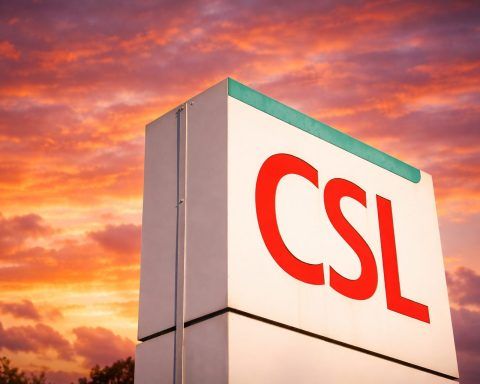- Current Price: ~$300 (as of Oct. 17, 2025) [1], up ~78% year-to-date and near its all-time high (~$307) [2].
- Recent Moves: CEO Larry Culp’s contract extended to 2027 [3]; GE won a $5 billion U.S. Air Force F110 engine contract [4]; and GE launched a 7‑year AerCap maintenance partnership for its new GE9X engine [5].
- Earnings: Q3 earnings (due Oct. 21, pre-market) are expected at ~$1.45–$1.46 EPS on $10.3B–$10.34B revenue (∼+27% EPS, +15–16% sales YoY) [6]. Q2 (July) delivered $1.66 EPS vs $1.43 consensus (a 16% beat) on $10.15B sales [7]. Full-year 2025 EPS consensus is ~$5.87 [8] (≈+27% YoY).
- Investor Sentiment: 17 analysts rate GE stock a Moderate Buy (15 Buy, 1 Hold, 1 Sell) [9]. Price targets range widely (~$264 average) but include high-outliers (Goldman $305, UBS $321, RBC $300) [10] [11]. Bullish models see long-term upside (some forecasts project GE as high as $666 by 2030 [12]), while bears warn of rich 40×+ P/Es and supply risks [13].
- Market Context: Strong global travel and defense demand underpin GE’s engine business. Passenger traffic is surging (~+12% in 2024 vs 2023 [14]) and defense budgets topped $2.4 trillion last year [15]. Boeing and Airbus are ramping jet production (Boeing has FAA clearance to boost 737 MAX output to 42/month [16]), directly driving LEAP and GE9X engine orders.
Surging Stock Performance
GE Aerospace shares have gone vertical in 2025. As of Oct. 17 the stock closed right around $300 [17], roughly double its late-2024 lows and +78% year-to-date [18] – one of the best gains among mega-cap industrials. The 52-week range is just $159–$307 [19], and the stock now trades well above its 50- and 200-day moving averages. Trading volumes remain robust (typically over 1 million shares/day [20]), and analysts note the price is hugging the record set in Sept. 2025 (~$305 [21]). This rally reflects growing investor confidence after GE split off its energy and healthcare units, leaving “GE Aerospace” as a lean pure-play engine maker [22].
Technical indicators also look strong: the stock surged on the back of better delivery figures and cost controls, lifting shareholder returns. For example, in January 2025 GE raised its full-year profit guidance to $5.10–$5.45 EPS (from prior $4.95–$5.15) [23], and simultaneously boosted its buyback program (to $7 billion) and dividend (up 30%) [24]. Such moves – along with a healthy backlog and rising service revenue – have helped propel the share price.
Recent News & Strategic Developments
- AerCap MRO Deal: In mid-October 2025, GE announced a 7-year contract with lessor AerCap to provide lease-management and spare parts support for GE’s new GE9X engines (Boeing 777X) as well as its GE90, GEnx, CF6 and CF34 families [25]. AerCap’s CEO Tom Slattery praised the deal as strengthening their partnership and expanding service support for GE’s latest engines [26]. This contract should ensure robust aftermarket orders when the 777X finally enters service.
- Defense Contract: In March 2025 GE won a $5 billion indefinite-delivery contract for F110-GE-129 fighter engines (for F-15 and F-16 aircraft) [27]. Management confirmed this covers engine deliveries, spares and services, reinforcing the F110’s strong reputation [28]. The win came alongside a pledge of roughly $1 billion investment in U.S. factories and supply chains in 2025 [29], showing GE’s commitment to domestic production.
- Supply-Chain Improvements: GE has been fixing its bottlenecks from last year. Suppliers are now delivering over 90% of committed parts, up from ~50% a year ago [30]. Reuters reports GE expects LEAP engine production to rise 15–20% in 2025 as parts flow smoothly [31]. CEO Larry Culp told Reuters the company is “making real progress” on supply constraints [32]. This has allowed GE to lift its delivery outlook and even raise 2025 guidance (EPS now $5.60–$5.80 [33], up from $5.10–$5.45 earlier). As Culp put it: “We learned a lot through last year…we have obliterated countless constraints in the supply base.” [34]
- Operations & Returns: To support growth, GE is increasing capacity and rewarding shareholders. It boosted its share buyback plan to $7B for 2025 [35] and hiked the dividend to $0.36 quarterly (~0.5% yield) [36]. On the R&D front, GE and Beta Technologies are co-developing a hybrid-electric engine generator for future aircraft [37], positioning GE for advanced propulsion in the long term. GE also reached a 5-year labor pact with its U.S. engine workers, ensuring continuity [38]. Leadership remained stable: in mid-2024 the board extended Culp’s contract through end-2027 [39], praising his “extraordinary” turnaround work [40].
Earnings Outlook and Investor Sentiment
All eyes are on GE Aerospace’s Q3 earnings (Oct. 21, pre-market). Street consensus (Zacks/Finviz) calls for roughly $1.45–$1.46 EPS on ~$10.30–$10.34 billion revenue [41]. This would mark about +27% earnings growth and +15–16% sales growth versus Q3 2024 [42]. By comparison, Q2 (reported July 17) delivered $1.66 EPS on $10.15B revenue – well above the $1.43 consensus – with sales up ~21% YoY [43].
Analysts have been raising their estimates into quarter’s end. GE’s Earnings “ESP” (the gap between the most recent and original EPS estimates) is about +2% [44], indicating analysts’ best guesses are higher than older forecasts. Historically this has been a bull signal – GE beat the EPS consensus in each of the last four quarters, and all were positive ESP cases [45]. Zacks notes GE’s full-year EPS consensus (~$5.87) implies +27% growth over 2024 [46], reflecting broad optimism on the business.
Investor sentiment is mostly bullish. GE’s strong Q2 results prompted several banks to lift their targets. For instance, Goldman Sachs raised its target to about $305 [47], and UBS recently boosted its target to $321 (Buy) citing strong demand and execution [48] [49]. TD Cowen also upped its target to $300 (Buy) after Q2 [50]. By contrast, Bernstein SocGen (at mid-$250’s) is more cautious. Overall, analysts’ average 12-month target is roughly in the high $250–$270 range, suggesting limited upside from today’s levels [51].
The price targets and ratings (as of Oct. 2025) illustrate this mix:
| Firm / Analyst | Rating | 12‑month Target |
|---|---|---|
| Goldman Sachs | Buy | ~$305 [52] |
| UBS | Buy | ~$321 [53] |
| RBC Capital Markets | Outperform | ~$300 [54] |
| TD Cowen | Buy | ~$300 [55] |
| Bernstein SocGen | Outperform | ~$254 [56] |
(Consensus: Moderate Buy; avg. target ~~$264 [57].)
Bullish vs. Bearish Perspectives
Bull Case: GE Aerospace has an entrenched, high-margin position in the aviation market. Its CFM joint venture is essentially the engine supplier for Boeing 737 MAX (LEAP engines) and a co-supplier for Airbus A320neo [58]. After selling an engine, GE earns ~70% of related commercial revenue from services and spares for decades to come. The company also boasts a massive backlog (over $175 billion [59]) that provides visibility into future revenue. If Boeing and Airbus ramp as planned, GE’s engine order book should keep growing. Bullish models see long-term upside: some forecasts have GE hitting $666 by 2030 under a best-case scenario [60]. In the short term, a Q3 beat or strong guidance could send the stock even higher.
Bear Case: Skeptics caution that much of GE’s good news is already priced in. The stock trades at a rich multiple (~36–40× forward earnings [61]), so any hiccup could spark a pullback. CoinCodex’s quant models (which partly blend technical and fundamentals) show a wide 2026 range – one version pegs a bear-case GE at only $241 vs. a bull-case $297 [62]. Downside catalysts include renewed supply-chain or tariff problems, weaker airline spending, or any execution missteps on big projects. New engines (e.g. the GE9X widebody engine) require heavy upfront investment and years before returning profit [63], so investors worry about R&D costs. In addition, a portion of GE’s upside hinges on cooperative negotiations (e.g. Culp has pushed to eliminate aerospace tariffs [64]). If global economic growth slows, airline capex could weaken.
Broader Market Trends and Risks
GE Aerospace’s performance is also tied to macro trends:
- Air Travel Recovery: After the COVID-19 downturn, global passenger traffic has rebounded strongly. IATA reports passenger kilometers were up ~12% in 2024 vs 2023 [65], and forecasts call for continued growth. More air travel means airlines need more jets and engines.
- Defense Spending: Geopolitical tensions have boosted defense budgets worldwide (>$2.4 trillion in 2023 [66]). GE’s defense unit (military jet engines and systems) stands to benefit. Recent European defense stock rallies highlight this environment [67] [68].
- Aircraft Production: Boeing and Airbus are trying to catch up to demand. For example, Boeing won FAA approval to raise 737 MAX output to 42 planes/month [69]. This should directly translate into more GE LEAP engine orders.
- Economic & Policy Risks: However, high inflation and interest rates could temper demand. GE itself notes tariffs will cost $500M in 2025 [70], which it is passing on to customers. If central banks push rates higher, high-valuation stocks like GE (trading more like a tech growth firm [71]) could face pressure. Any general market rotation out of industrials or profit-taking ahead of a “sell the news” cycle might pull GE down.
Outlook – Short-Term vs. Long-Term
In the near term, GE Aerospace’s fate hinges on its Q3 report. Analysts at Zacks give GE an EPS of ~$1.46 (27% jump) on $10.3B revenue [72], and a positive Earnings-ESP suggests another beat [73]. If GE tops estimates and offers strong 2025 guidance (or even 2026 hints), the stock could push past $310–$320. But TS2 cautions that “in the short term, GE Aerospace’s stock will likely move on the upcoming earnings and forward guidance” [74]. A cautious management tone or weaker-than-expected guidance might trigger a pullback, since high expectations are already baked in.
Over the longer haul, the secular story remains positive: a leaner GE Aerospace focused on engines and services, with a huge backlog and improving operations. Bullish analysts emphasize GE’s dominant market share and growing installed base, which should drive cash flow for years. On the flip side, any broader downturn in air travel or aggressive Fed hikes could test those assumptions. In sum, expert opinion is divided: Wall Street’s consensus leans bullish, but with caveats. Investors should watch closely for October’s earnings – they could confirm the breakout or warn of profit-taking ahead.
Sources: Latest market data and forecasts from industry analysts and news outlets (e.g. ts2.tech, Reuters, Zacks, Deloitte) [75] [76] [77] [78].
References
1. ts2.tech, 2. ts2.tech, 3. ts2.tech, 4. ts2.tech, 5. ts2.tech, 6. ts2.tech, 7. ts2.tech, 8. www.nasdaq.com, 9. ts2.tech, 10. ts2.tech, 11. www.investing.com, 12. ts2.tech, 13. ts2.tech, 14. www.deloitte.com, 15. www.deloitte.com, 16. ts2.tech, 17. ts2.tech, 18. ts2.tech, 19. ts2.tech, 20. ts2.tech, 21. ts2.tech, 22. ts2.tech, 23. ts2.tech, 24. ts2.tech, 25. ts2.tech, 26. ts2.tech, 27. ts2.tech, 28. ts2.tech, 29. ts2.tech, 30. www.reuters.com, 31. ts2.tech, 32. www.reuters.com, 33. ts2.tech, 34. www.reuters.com, 35. www.reuters.com, 36. ts2.tech, 37. ts2.tech, 38. ts2.tech, 39. ts2.tech, 40. ts2.tech, 41. ts2.tech, 42. ts2.tech, 43. ts2.tech, 44. ts2.tech, 45. ts2.tech, 46. www.nasdaq.com, 47. ts2.tech, 48. ts2.tech, 49. www.investing.com, 50. www.investing.com, 51. ts2.tech, 52. ts2.tech, 53. ts2.tech, 54. ts2.tech, 55. www.investing.com, 56. www.investing.com, 57. ts2.tech, 58. ts2.tech, 59. ts2.tech, 60. ts2.tech, 61. ts2.tech, 62. ts2.tech, 63. ts2.tech, 64. www.reuters.com, 65. www.deloitte.com, 66. www.deloitte.com, 67. ts2.tech, 68. www.deloitte.com, 69. ts2.tech, 70. www.reuters.com, 71. ts2.tech, 72. www.nasdaq.com, 73. ts2.tech, 74. ts2.tech, 75. ts2.tech, 76. www.reuters.com, 77. ts2.tech, 78. www.deloitte.com







